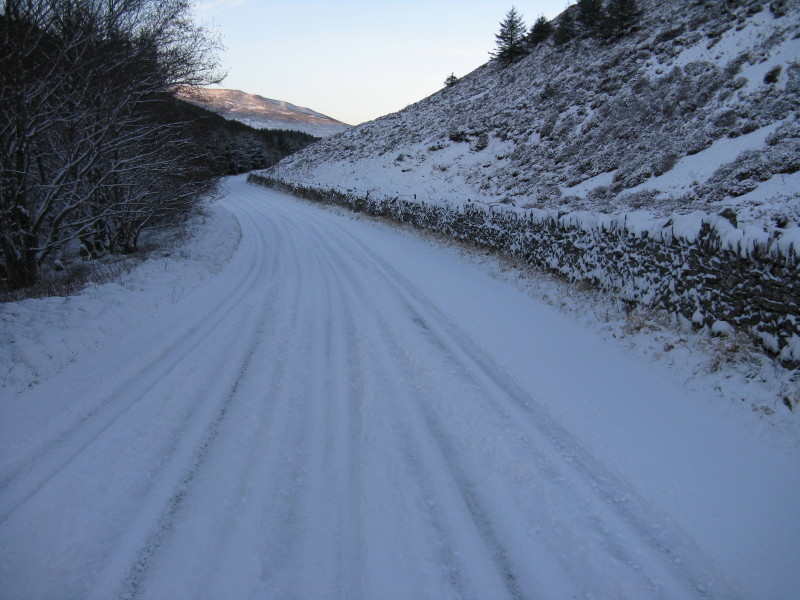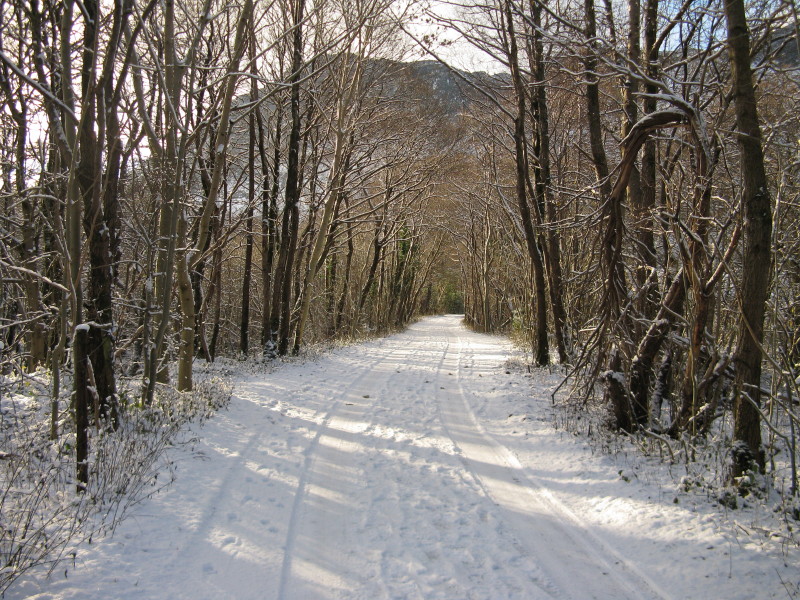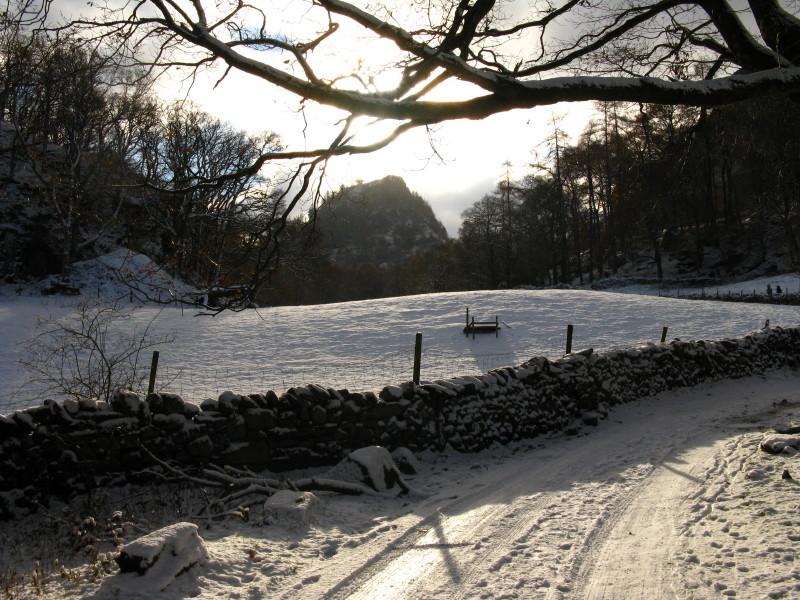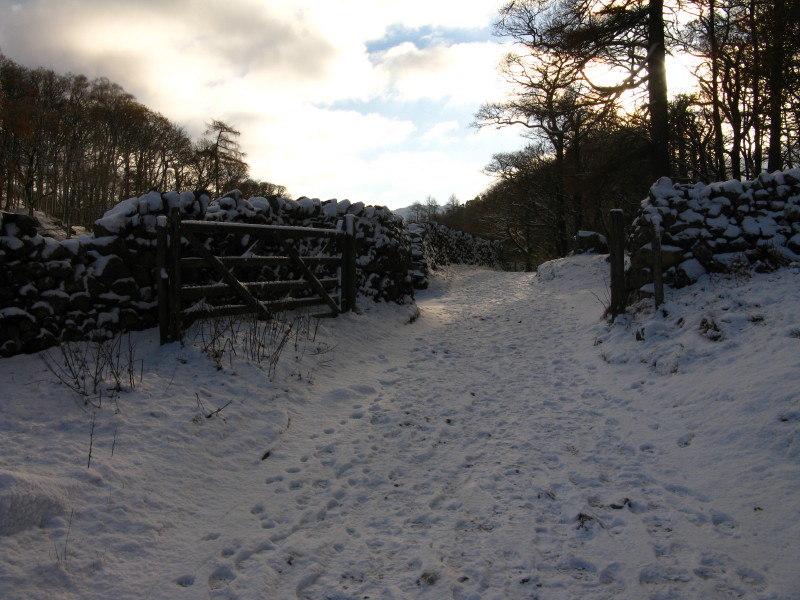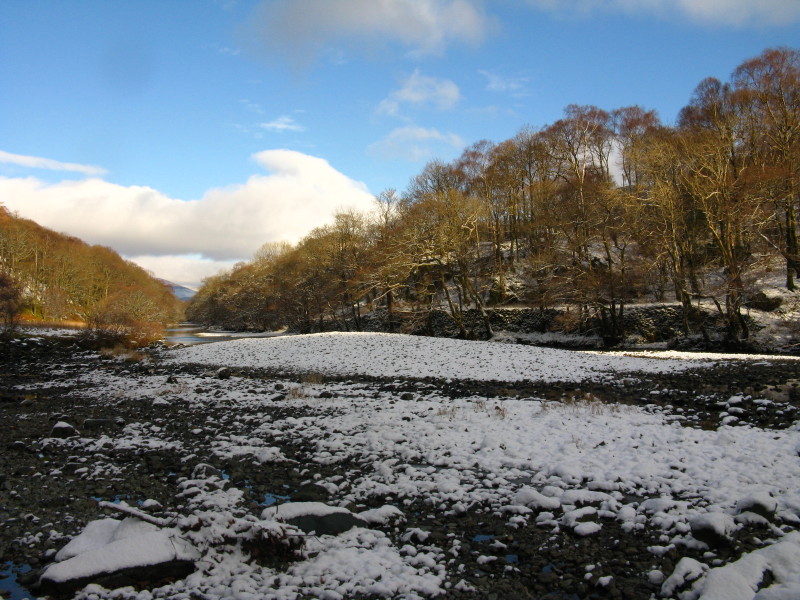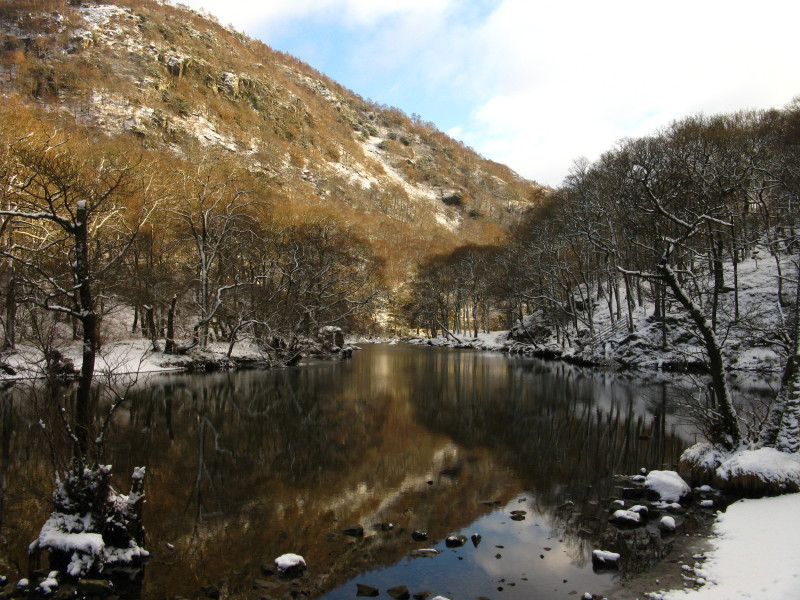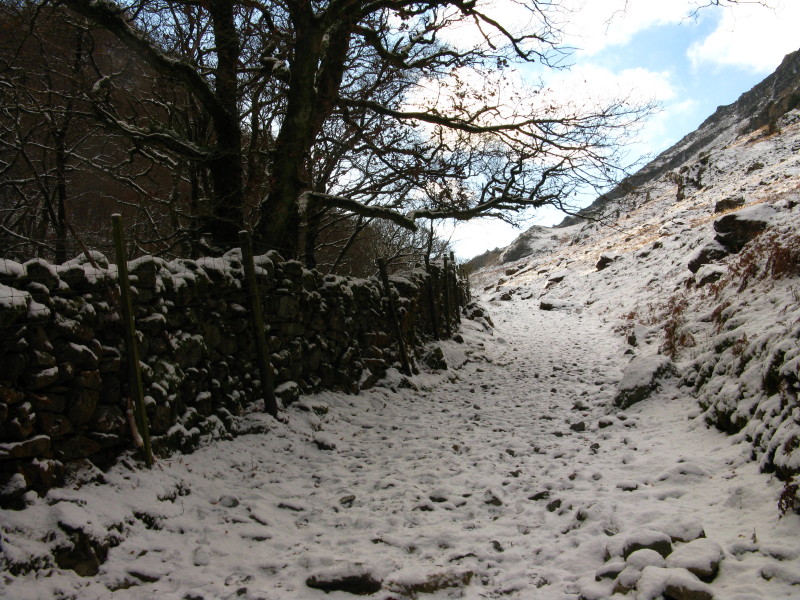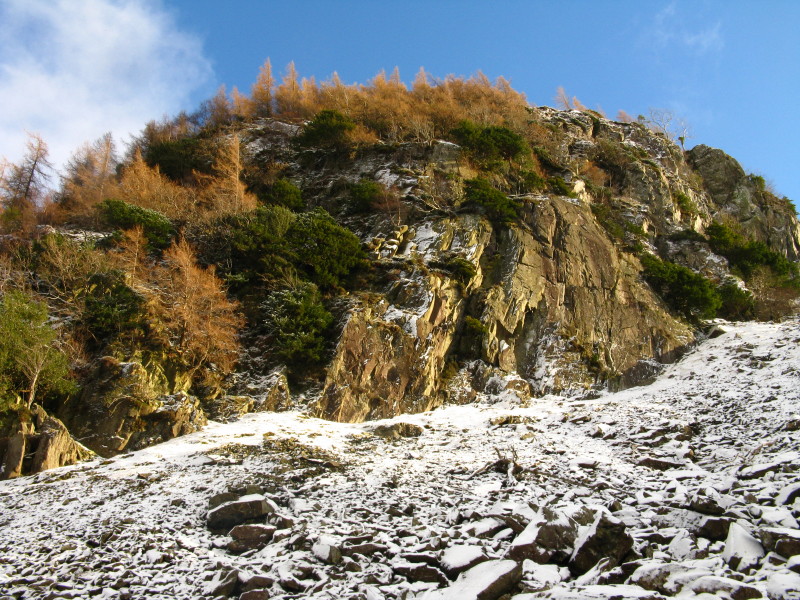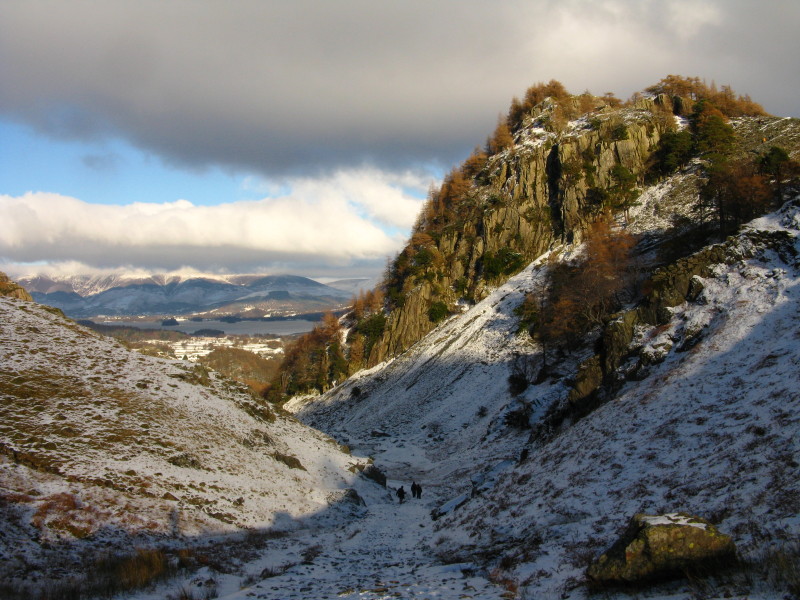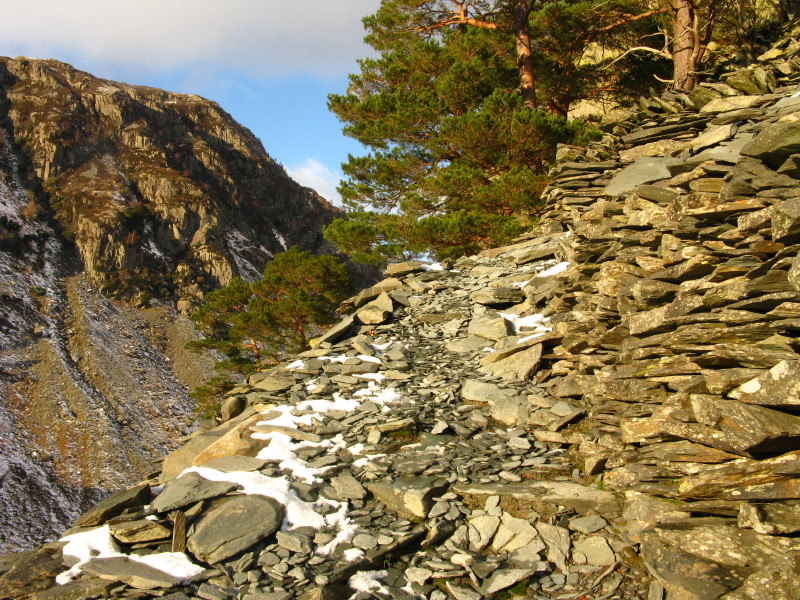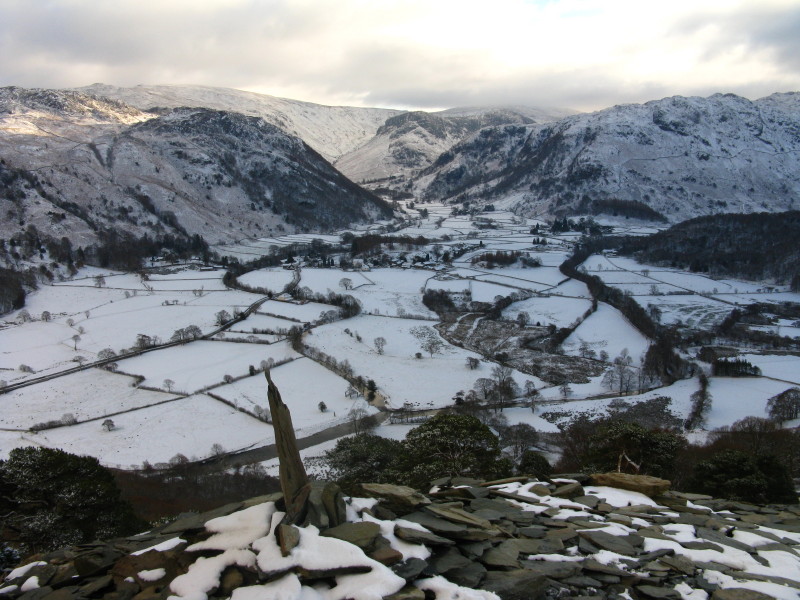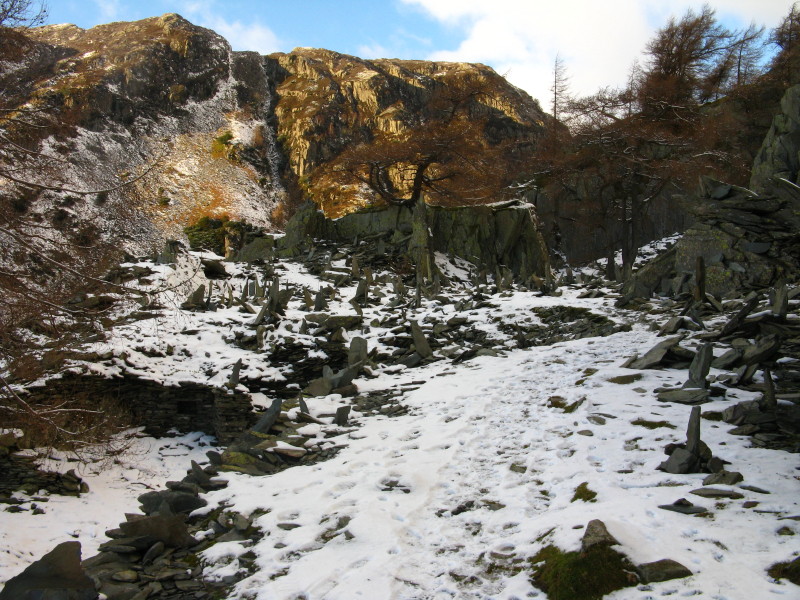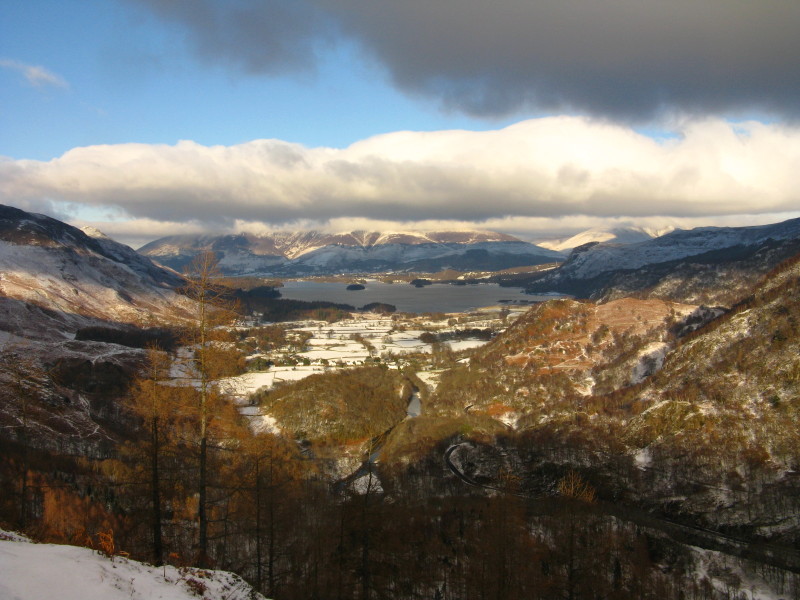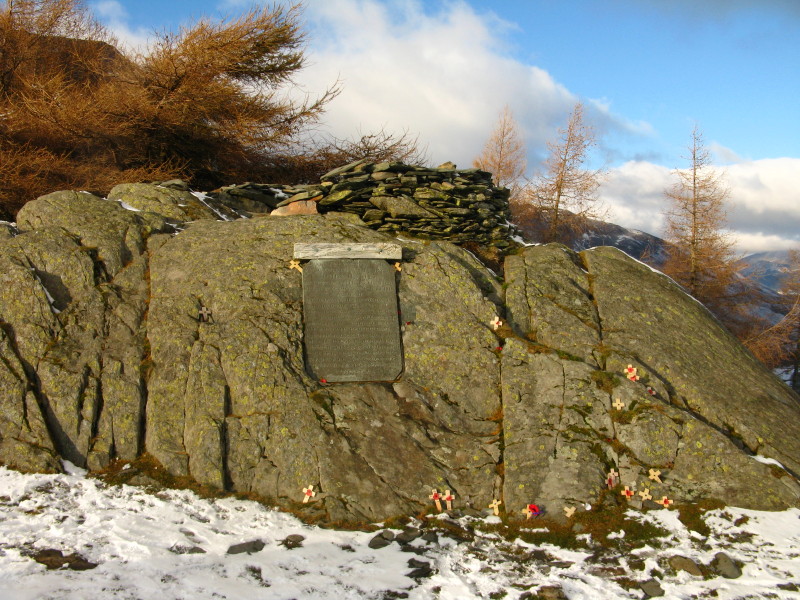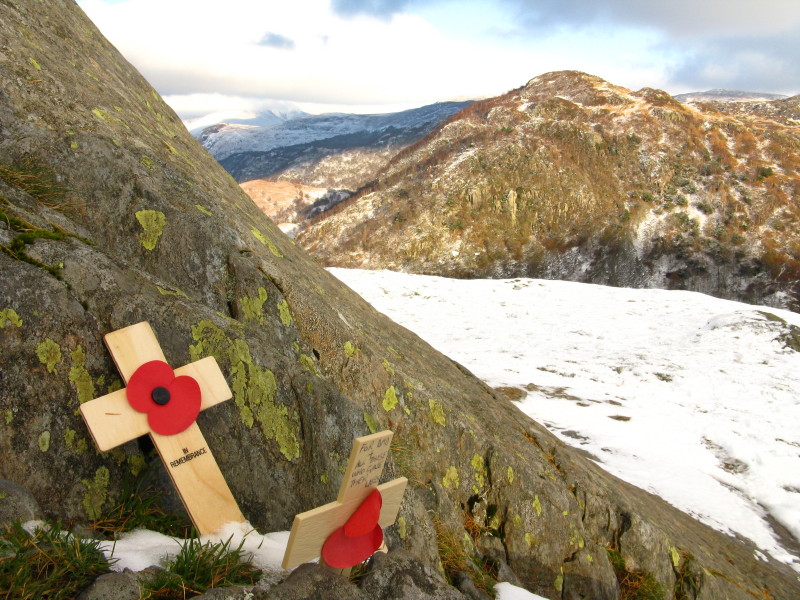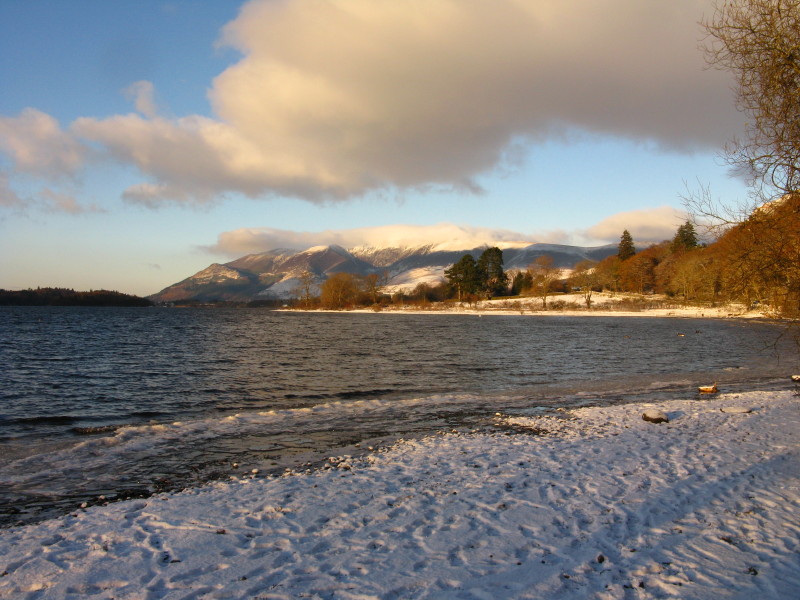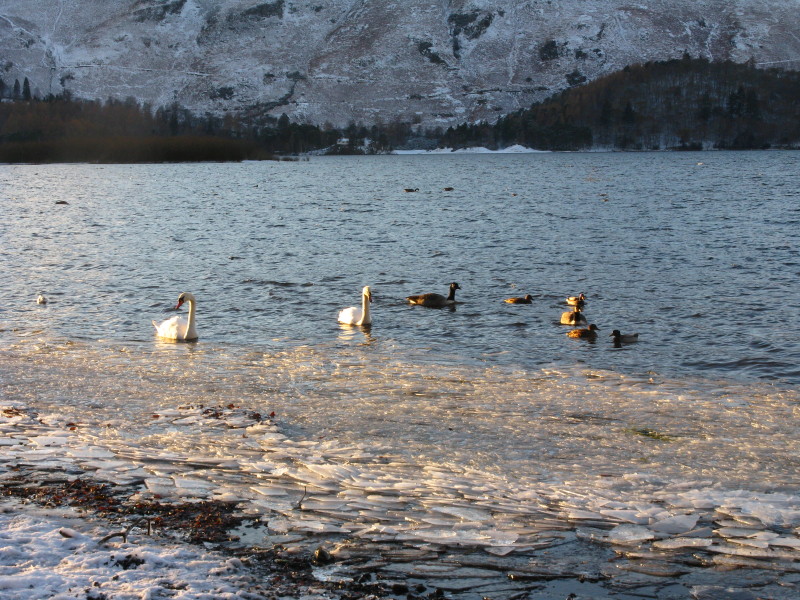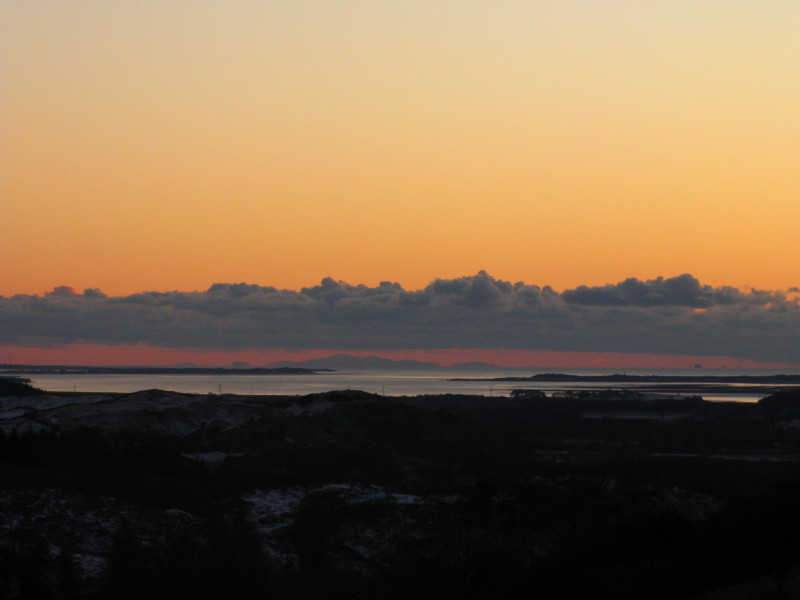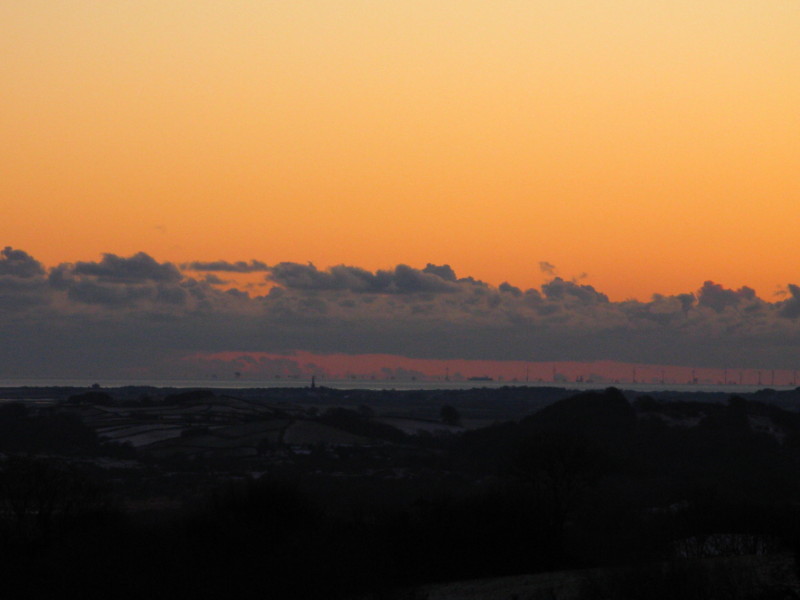Castle Crag27 November 2010I woke and got up in the dark, as planned, had breakfast, finished packing my bag and picked it up to go out of the back door, to find that it had snowed during the night, which I wasn't expecting. It was only a light dusting, and I proceeded as planned towards Buttermere, but as I travelled north through the Lake District, it became clear that there had been a good deal more snow further north, and that crossing the Honnister Pass was not a practical proposition. I decided to try the Whinlatter Pass, as a more gentle route, and just about managed it, though with hindsight it wasn't a good plan, particularly as all the crawling around at 10 mph meant that I started to run low on fuel and decided to divert to Cockermouth to fill up, making the crossing of Whinlatter a pointless exercise. I then turned towards Buttermere, and managed, with some effort, to make it to Buttermere village but balked at the climb out of the village. As I was by now worried about whether I would get back up a hill near Lanthwaite, I abandoned the whole plan and turned tail for Cockermouth again, and from there headed back towards Keswick. After almost four hours of travelling, I stopped for a rest by Bassenthwaite Lake, and plumped for a new plan - a visit to Castle Crag, the lowest of the Wainwright fells. After another abortive motoring experience heading towards Grange through Portinscale (which wasn't my plan, but I instinctively followed a sign), where a car was being pushed out of a hedge, I returned to my plan to take the main Borrowdale road to Grange, which I managed without too much difficulty, and arrived at Grange a mere 4.5 hours after leaving the house.
A big change and big comedown from the originally planned walk, and thus not quite satisfying, but a good walk nonetheless. Total distance 5.2 km and 280 metres of ascent in 2 hours 26 mins (including the return visit to Heron Pike to pick up my camera)
|
